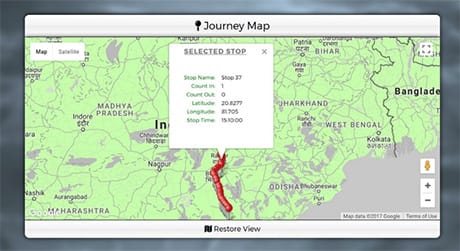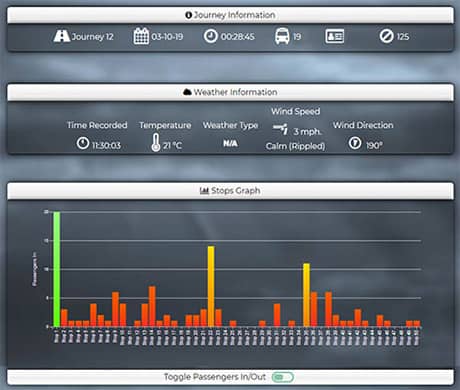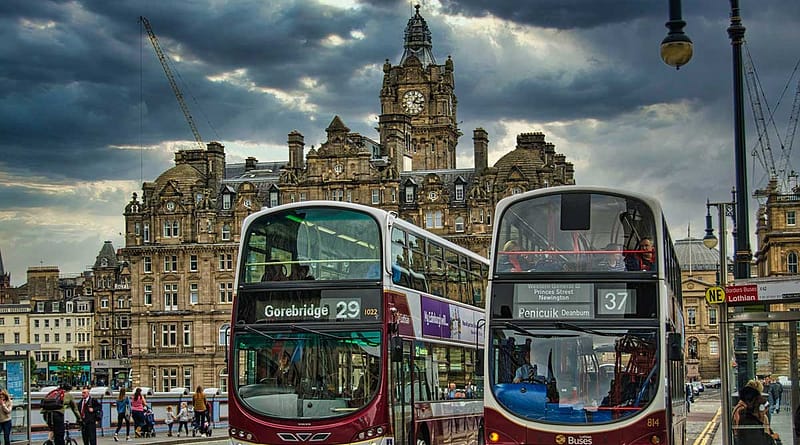Public transport occupancy data is of utmost importance, says report
“Data regarding vehicle occupancy is of utmost importance to government entities and public transportation operators as it allows them to improve their current services” said J. P. Chanchico at the 2021 International Conference on Information and Communication Technology Convergence.

Journey Map produced by Automatic Passenger Counting system
There are various ways to collect the data, including people doing manual surveys and automatic passenger counting (APC) systems using cameras and people counting units. The latter has the advantage that all routes can be covered at all times, with counts attributed to individual bus stops. Up to 98% accuracy is achievable with this computer vision technology, and live occupancy numbers can be shown on web browsers and smart phone aps. Retail Sensing systems ensure that only the counts are kept and transmitted – not video footage – saving bandwidth and preserving peoples’ privacy.
Cameras are placed above the doors to the bus, train or other public transit vehicle. The software algorithm examines the video stream and detects people moving through a counting zone, getting on or off.
Live Counts and Locations
The reports tell you exactly when people got on and off, and where they did so. Integrated GPS lets entries and exits be linked with the position of the vehicle. It also allows users to locate vehicles in real time.
Other sensors can be integrated with the APC, including door sensors recording the times the doors were open.

Cloud reporting to web browser or smart phone.
Further Reading
Automated Passenger Counting, Retail Sensing
J. P. Chanchico, P. C. M. Garcia, C. M. Festin and W. M. Tan, “Waypoint: Online Semi-automatic Vehicle Occupancy Data Collection System,” 2021 International Conference on Information and Communication Technology Convergence (ICTC), 2021, pp. 961-966, doi: 10.1109/ICTC52510.2021.9620840.
